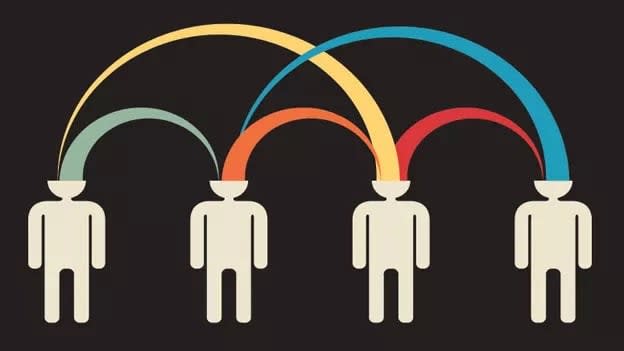Revamping employee engagement strategies

A shift from the employer’s market to an employee’s market is a visible example of how disruptions can change the industry dynamics. So unlike the era when change management was a well-deliberated intervention, change is a way of life today. Therefore, organizations are devising agile ways of dealing with the dynamic business and talent management complexities. Organizations are experiencing a striking evolution in today’s talent market. The talent needs are so demanding for organizations owing to the evitable disruptions in the talent landscape that it becomes essential to understand the talent market and organizational dynamics in view of the business goals and vision while designing strategies for effective talent engagement.
Different talent pools will naturally have different motivators, and a lot is being accomplished by the end of the year to meet talent engagement goals. However, the biggest dilemma for all organizations predominantly remains talent engagement; what engages talent? To find the right answer, organizations will have to shift their focus from what can they accomplish towards what will talent absorb and connect with? To establish this connection, the best one can do is simplify things because an endeavor to engage employees, organizations are inadvertently building a complex culture. Many organizations sidestep the fact that culture is the biggest driver of employee engagement. Too many initiatives and programs to provide options to your employees may be a great effort, but this leads to scattered attention to all such programs. Scattered attention means a lack of focus, which defeats the purpose of launching various programs to engage talent today.
Does your leadership, including managers, have some bandwidth freed up to establish a connection through these programs? Is it not the time that organizations begin to think of taking a pause to disengage to re-create and re-engage? Our bodies benefit from movement and physical activity, but the mind benefits out of stillness; hence, a brief pause helps to infuse clarity and a clear direction.
- Prefer authenticity over glamour: Effective talent pipeline is not an outcome of just an intervention but persistent engagement efforts that design the right ecosystem to help your talent grow. Thus, ensure clear goals as you launch vital talent programs by asking yourself are you developing them for the next level roles, or is it just a glamorous activity? Avert unnecessary activities leading to unrealistic hopes. Go ahead only if you believe and see a need for it. Remember, any impulsive efforts in this direction will disengage talent.
- Provide challenges, recognize and stay agile to engage: The business landscape may change by the time you have a talent engagement framework ready. Hence, be responsive to change by staying agile. This is an era of “dynamism” with new thrilling revelations every day and dealing with randomness is a skill in itself that leaders must acquire. TINYpulse reports that less than one-third of people strongly agree that they can reach their full potential at their organization, whereas 84 percent admit they feel challenged at work. This seemingly conflicting results is due to a lack of tools and resources to help employees function optimally and managers must help their team to identify and invest in learning opportunities.
- Involve leaders: Thriving in a matrix set up is not a cakewalk; besides, complex frameworks may add to the complexities as well. Since the foundation you lay shall decide the magnitude of impact you can create, ensure to simplify frameworks. Secondly, the involvement of the leaders is vital to ascertain this journey is meaningful and all parties have to drive engagement with an equal passion and rigor. So cherry-pick your leaders but allow them to opt-in or opt-out in the very beginning. TINYPulse says that employee-manager relationships have a significant impact on happiness quotient.
- Establish a personal connection: Let your employees identify challenges and personalize their learning journeys to ensure that they are equipped with the right support to solve the said challenges. Managers must navigate their way adeptly through stressful patches like conflict and peer rivalry, etc. Re-strengthen the emotional commitment of your key employees, which shall eventually influence their “intent to stay” with the organization leading to talent retention. Remember, that providing emotional security and mental stimulation is critical to keeping employees happy.
- Ensure alignment of vision: Let employees know the milestones reached, challenges ahead & support system created to enable their success. Reward them well and do it on time. Win their rational commitment and hence “discretionary effort” for higher performance. Recognize your team for a job done well as recognition is the secret sauce of employee engagement and ensures that the long-term goal of the workforce and the organization are aligned.
- Develop leaders: A report by Gallup found that “managers account for at least 70 percent of the variance in employee engagement scores across business units.” Or, in other words, leaders make or break motivation within their team. So focus on creating role models who walk the talk. You don’t need to cultivate leaders who want to create more followers but those who develop other leaders to strengthen the organizational leadership pipeline. Leadership connect is a strong retention lever for high potential talent as they aspire to become what their “role models” are today. Leaders are your key talent as well, and key talent at all levels is a hot commodity.
- Evangelize the Inclusive Talent System: The Inclusive Talent System is the topmost level of the Talent Maturity Model by Bersin (Deloitte). To ascertain a balanced and global approach to talent management, you must infuse diversity while inculcating a culture of inclusion. Your workforce dynamics are highly influenced by diversity at leadership and peer levels, as that further impacts the “feeling of inclusion.” Cultural issues like nepotism, favoritism are automatically discouraged in a landscape that respects diversity and inclusion.
To disrupt the conventional ways of engaging people, decide if the focus is to engage high potential talent or high performing talent or both; and strategize your talent scorecard accordingly. You may want to out in exclusive efforts to engage high performing talent if the legacy skills, domain expertise have a more significant influence on your success and revenues to ensure stability. If you have aggressive ramp-up plans and foresee vertical growth openings, you may want an intensified focus to engage high potential talent while strengthening your capability plan to mitigate the risk of “knowledge leak.”
Your top-performing talent will ensure stability, and high potential talent will enable growth. If you do not “disrupt” your traditional ways of engaging with business, customers, or employees, you would only disrupt energies and progress thereby. There is an opportunity for organization and digitally-savvy leaders to engage key talent who shall further engage other talent pools, and in doing so, stave off the competition, to move towards a highly engaging culture and workforce. Let’s end with a very apt and relevant quote from Daniel Pink:
“The single greatest motivator is making progress in one’s work. The days that people make progress are the days they feel most motivated and engaged.”










